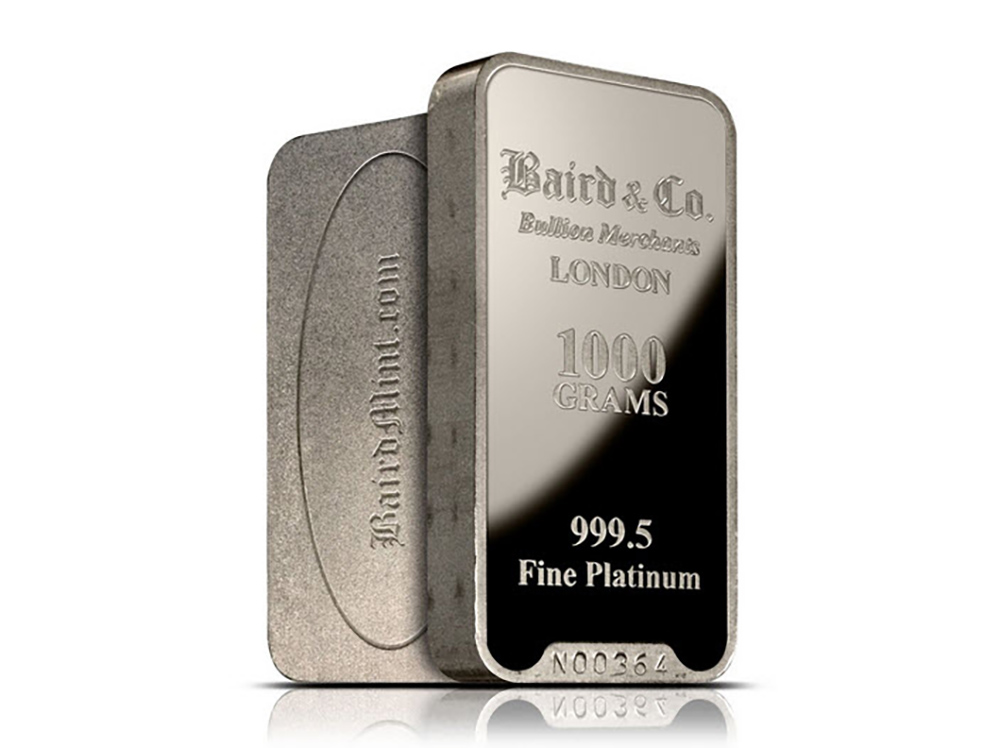Shore Collectibles;
The Gold and Silver Mine
By Douglas Keefe

Last week I purchased the most expensive 1 ounce precious metal bar I have ever bought in the entire time I have been in business (in case you are interested, that is 50 years). The bar was 1 ounce of rhodium and I paid over $8000 for it, which is more than the cost of 1 each 1 ounce bars of platinum, gold and palladium together.
Rhodium is one of earths rarest elements, with total annual production usually around 30 metric tons versus 3,300 metric tons of gold produced last year. Due to this low amount its’ price can vary widely since there is no stable supply or source to rely on and it is not traded on the major commodity exchanges due to the lack of supply. Extraction of rhodium is complex as it is usually mixed with gold, platinum and palladium and is primarily found in South Africa, the Ural Mountains and North America. Rhodium’s primary use in in conjunction with other metals in catalytic converters in automobiles and because of its’ price it is used as a plating due to its’ resistance to corrosion.
I had never even seen a rhodium bar before, but this one was packaged just like a platinum or palladium bar sealed with an assay card, but to be sure we tested it using our x-ray machine which gave the reading of .999 pure. Can’t be too sure, especially at that price.
Because of the small supply of rhodium, its’ price can fluctuate drastically. The year 2000 saw rhodium price around $2000, which by 2003 dropped to $500, then by 2008 when all other metals were rising in value, rhodium hit $10,000, only to rapidly drop to $1000 by 2009. Rhodium’s prices fluctuated from $1000 to $3000 until last year and then this year broke over $11000. As a result of the wild swings in price, rhodium is highly discounted when one wishes to sell because there is no guarantee there will be a next buyer and at what price.
I experienced a similar situation with discounting during the 1980 silver rush when the Hunt brothers were trying to corner the silver market. While the Hunt brothers were buying silver, the price of silver continued to rise, reaching $50 per ounce. Everyone was selling their silver, coins, jewelry and silverware, but the refineries were getting backed up with product and couldn’t melt and refine the silver on hand for weeks. As a result the prices paid were more in the order of $35 an ounce instead of $50 an ounce because no one could be sure the price would hold, and it didn’t. Once the government stepped in and stopped the Hunt brothers from buying silver, the prices collapsed, and even the difference between the quoted and paid prices were not enough to prevent some people from losing a lot of money.
Douglas Keith is the President of Beachcomber Coins, Inc. He and his wife Linda operate Beachcomber Coins and Collectibles, formally located in the Shore Mall and now located at 6692 Black Horse Pike, Egg Harbor Township in the old Wawa building. They also have satellite offices for buying only in Brigantine (Saturday), and in Absecon (Tuesday). Between them, they have over 70 years of experience buying and selling coins, collectibles in precious metals. They are members of the American Numismatic Association, the Industry Council of Tangible Assets, the Numismatic Guarantee Corporation, the Certified Coin Exchange and the Professional Coin Grading Service. Visit their website at www.beachcombercoinsinc.com for video and information.





